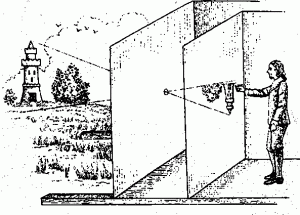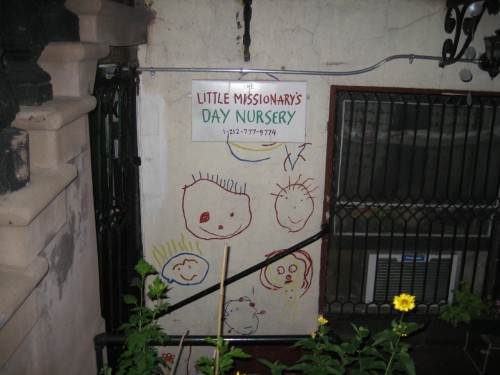PHOTO: THE CREEPIEST NURSERY SCHOOL FACADE EVER
I swear to God, this is a real nursery school in Manhattan. I took the picture.
talented person makes things that are swell

I just read this post on io9 about Thomas Allen, who is an apparently awesome photographer (though that doesn’t really do justice to the amount of craft that goes into making the things he ultimately photographs) about whom I knew nothing until just now.

io9 has a small gallery of his work attached to their post, and there’s another (where I’ve been pinching these images from) at the Aperture Foundation page for for his book, Uncovered.
Oh and he has a blog too.

A JPEG PAINTS 1000 WORDS

The photos which accompany Pequin’s stories are always stunning, and as much as I advocate the breadth of words, I think they augment the stories.
Steven Coy (editor) has explicitly cited Lee Klein’s eyeshot for the image per text inspiration, the latter whom understandably didn’t cite New Yorker for having always done the same. In the New Yorker, the pairing of image and story seems conceptually unconscious. (I’m sure the politics of publishing both story and image takes precedence over any editorial ideology, if any, concerning the pairing.)
Eyeshot’s photos are quirky and playful, but they are somewhat detached from the story itself, and celebrated more for their inherent attributes. Coy is onto something different here. The photos at Pequin act as a kind of surrogate or residual ‘scene’ for/from the story; either that, or as a clever visual pun.
For example: Dream Date, about a not-so-great boyfriend and his girlfriend’s unmet needs, is accompanied by a scene looking down a pink stairwell into a dark hallway, a composition which shares the orientation of a woman’s spread legs. There’s even a light bulb (anatomically consistent) which supposes a clitoris.
In Animal Parade, a story about the mishaps of taking a wrong exit on the freeway, the image is of freeway periphery (cinderblock walls, telephone polls, fastfood signs, etc.). The photo has a way of snapping into POV function, embodying the view of characters in the story.
Per Pequin’s writer’s guidelines, stories are to be under 1000 words (ideally exactly 1000 words). Coy seems hell-bent on toying with the whole ‘picture paints a thousand words’ thing. Good for him, and good for us.
October 2nd, 2008 / 3:40 pm

